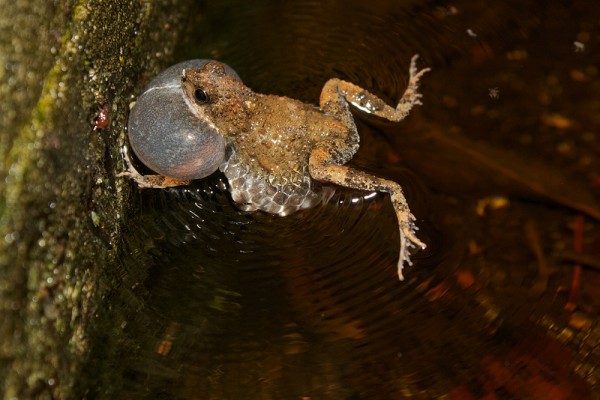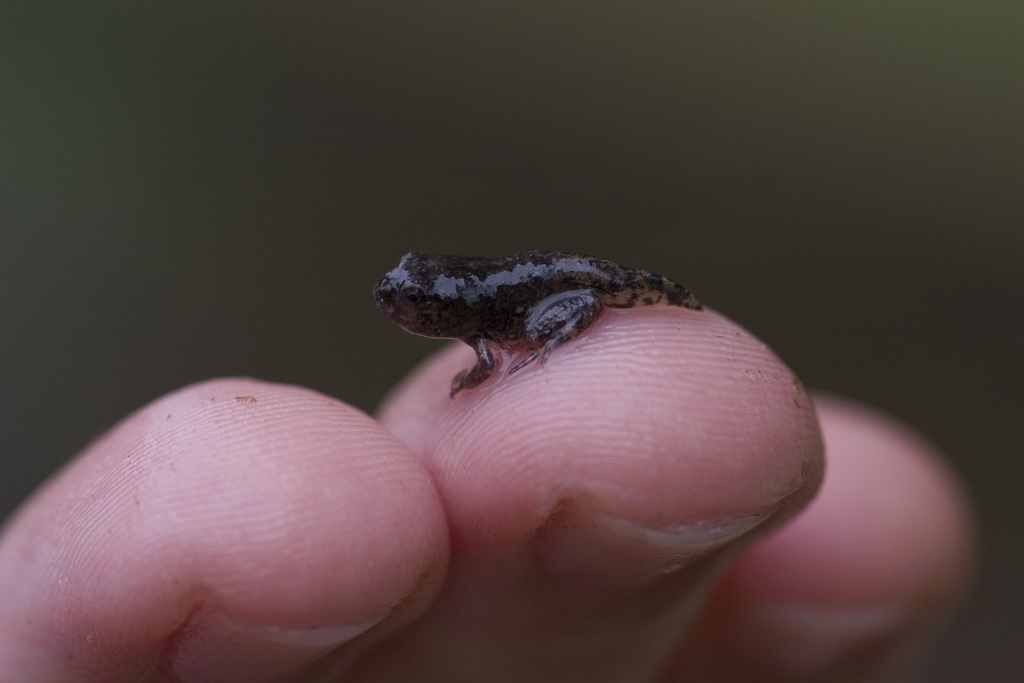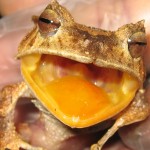Now that the rains have set in, it is tough to find a freshwater ditch or puddle in Panama that does not have the tell-tail ‘cuieeeeeee-chuck’ calls of male túngara frogs hoping to attract a mate. If you live in Panama, follow this distinctive call to its source and you are likely to find an otherwise unremarkable, warty little creature putting on the performance of his life. This tiny brown comedian turns his whole body into an inflatable pool-toy on the water, exuding air from his swollen body into a huge gular pouch and back again.
Frogs that can avoid the attention of voracious frog-eating bats drawn to their calls pair with females and whip up the egg mass into a stiff white foam nest, using their hind legs like egg-beaters. The foam protects developing embryos from dehydration, sunlight and pathogens until they hatch after around 4 days. Check out this video about Smithsonian Tropical Research Institute Scientist Rachel Page, who studies these little creatures and the bats that snack on them.
Tungara frogs are thankfully still thriving in the wild and are listed by the IUCN as least concern.
Photo courtesy of Brian Gratwicke. Send us your own cute frogs by uploading your photos on flickr here.



